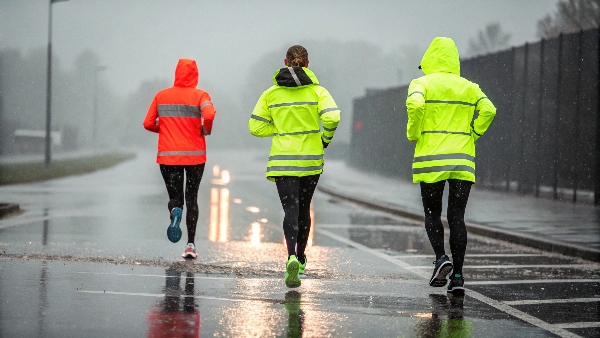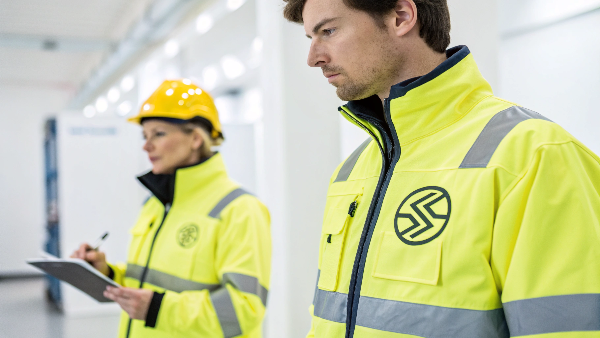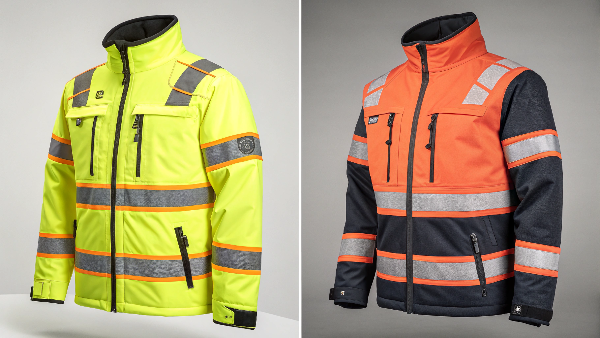In the fast-paced world of industrial operations, the safety of workers is a crucial concern for B2B buyers. As a company owner or product manager, like Danny, you understand the importance of maintaining a safe work environment while also keeping costs in check. However, ensuring worker safety without compromising on quality or inflating budgets can be a daunting challenge. You might have faced situations where inefficient communication with suppliers or delayed shipments led to missed peak sales, affecting both safety compliance and profitability. The need for reliable, high-quality safety apparel that meets industry standards and is delivered promptly cannot be overstated. This is where our high visibility clothing comes into play, offering a comprehensive solution to these pressing issues.
What Benefits Do Our High Visibility Clothing Provide for B2B Buyers?
High-visibility clothing offers numerous benefits for B2B buyers, particularly in industries where worker safety is paramount. Here are the key advantages:
- Enhanced Safety and Reduced Accidents
High-visibility clothing significantly increases the visibility of workers, making them easier to see in high-traffic areas or low-light conditions. This feature reduces the risk of accidents involving vehicles and heavy machinery, contributing to a safer work environment. Studies indicate that environments with hi-vis apparel experience fewer "struck-by" incidents, which are common in construction and roadwork settings. For Danny, whose business model involves purchasing low-priced high visibility clothing from foreign suppliers and distributing them at a premium in the USA, ensuring that the products meet safety standards is crucial. Our clothing line is designed to enhance visibility, thereby reducing workplace accidents and enhancing overall safety.
- Regulatory Compliance
Many industries are required to comply with safety standards that mandate the use of high-visibility clothing. Organizations like OSHA (Occupational Safety and Health Administration) enforce these regulations, ensuring that workers are adequately protected. Compliance not only enhances safety but also helps businesses avoid legal liabilities associated with workplace injuries. Our high visibility clothing is manufactured to meet or exceed these regulatory standards, providing B2B buyers like Danny with peace of mind knowing that their end customers will be compliant with industry regulations.
- Improved Employee Morale and Productivity
When employees feel safe due to enhanced visibility, it can lead to increased morale and productivity. Workers are more likely to adhere to safety protocols when they are equipped with appropriate gear, fostering a culture of safety within the organization. Additionally, a uniform appearance promotes team cohesion and professionalism, which can further boost morale. For B2B buyers, investing in high-quality safety apparel translates into a more motivated workforce, leading to better productivity and reduced downtime.
- Brand Recognition and Professional Image
Customizing high-visibility clothing with company logos can enhance brand visibility and recognition. A team outfitted in branded hi-vis gear creates a professional image, making a positive first impression on clients and the public. This branding opportunity can strengthen customer relationships and improve overall brand reputation. For distributors like Danny, offering customizable options adds value to their product line, allowing them to cater to businesses seeking to enhance their brand image through safety apparel.
- Versatility Across Various Environments
High-visibility clothing comes in various forms—vests, jackets, shirts—allowing businesses to select the appropriate gear for different work environments. This versatility ensures that all employees have access to suitable protective apparel tailored to their specific job functions and conditions. Our product range includes safety vests, jackets, T-shirts, and accessories, providing B2B buyers with a comprehensive selection to meet diverse needs across different industries and climates.
Transition Paragraph
Having addressed the core benefits of high visibility clothing for B2B buyers, it's important to delve deeper into specific scenarios where such apparel plays a crucial role. Understanding these contexts not only underscores the importance of high visibility clothing but also highlights the strategic advantage of investing in top-quality safety gear. Let's explore the significance of wearing high-visibility clothing in various settings, starting with community cleanups.
Why is it important to wear high-visibility clothing during a community cleanup?
Wearing high-visibility clothing during a community cleanup is crucial for several reasons:
- Increased Safety
High-visibility clothing significantly enhances the visibility of participants, making them easily noticeable to passing vehicles and other individuals. This is particularly important in areas with traffic, as it reduces the risk of accidents. Bright colors and reflective materials ensure that volunteers can be seen from a distance, especially in low-light conditions or during early morning or late evening cleanups. For B2B buyers, providing hi-vis clothing for community events can be an excellent way to showcase their commitment to public safety and corporate social responsibility.
- Accident Prevention
The likelihood of accidents occurring during community cleanups is heightened due to the presence of vehicles and equipment. High-visibility clothing helps prevent "struck-by" incidents by ensuring that volunteers are clearly visible to drivers and machinery operators. This proactive measure can save lives and prevent injuries. By supplying hi-vis apparel for such events, businesses can position themselves as safety-conscious suppliers, appealing to organizations that prioritize community welfare.
- Compliance with Safety Standards
In many regions, wearing high-visibility clothing may be a requirement for outdoor activities involving potential hazards. Compliance with safety regulations not only protects participants but also demonstrates a commitment to safety within the community. This is particularly relevant in organized events where local authorities may enforce safety standards. For distributors, offering compliant high visibility clothing can open doors to partnerships with community organizations and local governments.
- Promoting a Professional Image
When volunteers wear matching high-visibility clothing, it creates a cohesive and professional appearance for the cleanup team. This not only fosters a sense of belonging among participants but also enhances the public's perception of the event, encouraging more community involvement and support. B2B buyers can leverage this aspect by branding hi-vis clothing with logos or slogans, turning community events into opportunities for positive brand exposure.
- Encouraging Awareness and Responsibility
Wearing high-visibility clothing serves as a reminder for all participants to remain vigilant about their surroundings. It promotes a culture of safety and responsibility, encouraging volunteers to look out for one another while performing cleanup tasks. For B2B buyers, promoting the use of hi-vis clothing in community settings can reinforce their reputation as advocates of safety and responsibility.
In summary, wearing high-visibility clothing during a community cleanup is essential for increasing safety, preventing accidents, ensuring compliance with regulations, promoting a professional image, and fostering awareness among participants. These benefits contribute to a safer and more effective cleanup effort.
When must high-visibility clothing be worn airside?
High-visibility clothing must be worn airside in various situations to ensure the safety of personnel working in potentially hazardous environments. Here are the key circumstances when high-visibility clothing is required:
- Outbound Baggage Dock and Airside Areas
High-visibility garments are mandatory in the outbound baggage dock and on all airside grassed areas. This requirement helps ensure that workers are visible to vehicle operators and others in these busy areas, where the risk of accidents is heightened. For B2B buyers supplying to the aviation industry, ensuring that their products meet these requirements is crucial for maintaining safety standards and customer satisfaction.
- Runways and Taxiways
Workers must wear hi-vis clothing while on runways and taxiways. These locations are critical for aircraft operations, and visibility is essential to prevent accidents involving moving aircraft or ground vehicles. Supplying compliant high visibility clothing for these areas ensures that B2B buyers can meet the stringent safety demands of the aviation sector.
- Around Aprons and Airside Roads
Personnel working on and around aprons, including airside roads that are used as workplaces, are required to wear high-visibility clothing. This includes drivers of vehicles who must wear hi-vis apparel whenever they are outside the protection of their vehicle cab. For distributors, providing a range of hi-vis options for different airside roles ensures that all personnel are adequately protected.
- General Airside Operations
All individuals operating in external airside areas, including maintenance staff and ground crew, must wear high-visibility clothing as part of their personal protective equipment (PPE). This requirement is crucial for reducing the risk of being struck by moving aircraft or vehicles. B2B buyers can capitalize on this need by offering a variety of hi-vis products that cater to the diverse requirements of airside operations.
- Exceptions
While high-visibility clothing is generally mandatory, there are exceptions for specific groups. For example, passengers transiting between an aircraft and terminal using designated walkways do not need to wear hi-vis clothing if they are under supervision. Additionally, personnel inside a vehicle are not required to wear hi-vis garments but must carry them for use when exiting the vehicle. Understanding these nuances allows B2B buyers to provide tailored solutions that meet the exact needs of their clients.
In summary, high-visibility clothing is essential for safety in airside operations, particularly in areas with heavy vehicle traffic and potential hazards associated with aircraft movements. Compliance with these requirements helps prevent accidents and ensures a safer working environment for all personnel involved.
What is class 1 high-visibility clothing?
Class 1 high-visibility clothing is designed for use in low-risk environments where there is a substantial separation from traffic and vehicle speeds do not exceed 25 mph. Here are the key characteristics and applications of Class 1 hi-vis garments:
Key Characteristics
- Minimum Reflective Material: Class 1 vests must have at least 155 square inches of reflective tape, ensuring adequate visibility in low-risk situations.
- Background Material: The vests require a minimum of 0.14 square meters of fluorescent background material, which is typically bright orange or lime green.
- Design Requirements: The reflective stripes should be positioned around the middle of the vest and above each shoulder to provide 360-degree visibility.
Suitable Applications
Class 1 high-visibility clothing is ideal for professionals working in environments such as:
- Parking Lot Attendants: Individuals managing traffic in parking areas where vehicle speeds are low.
- Delivery Personnel: Workers who operate in low-traffic areas, ensuring they remain visible while performing their duties.
- Roadside Assistance Workers: Personnel who assist stranded motorists in locations away from high-speed traffic.
For B2B buyers, offering Class 1 high-visibility clothing provides an opportunity to cater to a niche market that requires enhanced visibility without the need for the higher levels of protection required in more hazardous situations.
Do Americans wear high-vis?
Yes, Americans do wear high-visibility (hi-vis) clothing, particularly in various industries where safety is a priority. Here are some key points regarding the use of hi-vis clothing in the U.S.:
- Industry Requirements
High-visibility clothing is essential in industries such as construction, traffic management, and transportation. Workers in these fields are often required to wear hi-vis apparel to ensure they are visible to drivers and machinery operators, especially in high-traffic areas or low-light conditions. For example, the Federal Highway Administration mandates that workers on federally funded highways wear hi-vis clothing as part of its worker visibility rule. For B2B buyers targeting the American market, understanding these requirements is crucial for successful market penetration.
- Safety Standards
The use of high-visibility clothing is governed by safety standards established by organizations like the American National Standards Institute (ANSI). The ANSI/ISEA 107 standard outlines the requirements for different classes of hi-vis apparel based on the level of risk associated with specific job environments. This ensures that workers are adequately protected according to their exposure to hazards. B2B buyers can leverage these standards to assure their clients of the quality and compliance of their products.
- Enhanced Visibility and Accident Prevention
Hi-vis clothing is designed to make workers more conspicuous, which significantly reduces the risk of accidents. Studies have shown that wearing high-visibility garments can lead to fewer "struck-by" incidents, particularly in environments where workers are near moving vehicles or heavy equipment. This proactive approach to safety helps protect workers from potential injuries. For distributors, promoting the accident-prevention benefits of hi-vis clothing can enhance their appeal to safety-conscious buyers.
- Broader Applications
While hi-vis clothing is commonly associated with industrial settings, it is also worn by outdoor enthusiasts such as cyclists and runners, particularly during early morning or evening activities. This broader use highlights the importance of visibility in various contexts beyond just occupational safety. B2B buyers can tap into this diverse market by offering hi-vis clothing suitable for both industrial and recreational use.
In summary, high-visibility clothing is widely used across many sectors in the U.S., driven by safety regulations and the need to protect workers in potentially hazardous environments. Its effectiveness in enhancing visibility and preventing accidents makes it a critical component of workplace safety strategies.
Do you need to wear hi-vis in warehouse?
Yes, wearing high-visibility (hi-vis) clothing is essential in warehouse environments for several reasons:
- Increased Safety
Hi-vis clothing significantly enhances the visibility of warehouse workers, making them easier to spot in busy and potentially hazardous environments. This is especially important in areas where heavy machinery, such as forklifts, is used. The bright colors and reflective materials help prevent accidents by ensuring that operators can see workers from a distance, reducing the risk of collisions. For B2B buyers, supplying hi-vis clothing to warehouses can be a lucrative opportunity, given the high demand for safety apparel in these settings.
- Compliance with Regulations
In many cases, wearing hi-vis gear is mandated by safety regulations set forth by organizations like OSHA (Occupational Safety and Health Administration). Employers are legally required to provide personal protective equipment (PPE), including high-visibility clothing, to ensure the safety of their employees. Failure to comply with these regulations can result in legal consequences for the employer. B2B buyers must ensure that their products meet these regulatory standards to maintain their competitive edge.
- Prevention of Accidents and Injuries
The primary purpose of hi-vis clothing is to prevent workplace accidents and injuries. In warehouses, workers face hazards such as falling objects and moving machinery. Wearing high-visibility gear makes it easier for employees to be seen, which can help prevent "struck-by" incidents and other accidents. For distributors, emphasizing the safety benefits of their hi-vis products can attract clients who prioritize worker protection.
- Improved Morale and Productivity
Providing hi-vis clothing not only ensures safety but also boosts employee morale. When workers feel valued and protected, it can lead to increased job satisfaction and productivity. A safer work environment fosters a sense of belonging and pride among employees. For B2B buyers, highlighting the morale-boosting benefits of their products can enhance their appeal to potential clients.
- Versatility and Comfort
Modern hi-vis clothing comes in various styles and materials that prioritize comfort while ensuring visibility. Many options are lightweight and breathable, allowing workers to wear them comfortably throughout their shifts without overheating. For distributors, offering a range of comfortable and versatile hi-vis options can differentiate them from competitors and attract a broader customer base.
In summary, wearing high-visibility clothing in warehouses is crucial for enhancing safety, ensuring regulatory compliance, preventing accidents, improving employee morale, and providing comfort. These benefits make hi-vis apparel an essential component of workplace safety strategies in warehouse settings.
Conclusion
In conclusion, our high visibility clothing is an indispensable asset for B2B buyers seeking to enhance safety, comply with regulations, improve employee morale, and promote a professional image across various industries. Whether it's for industrial operations, community cleanups, airside activities, or warehouse environments, the benefits of hi-vis apparel are clear and compelling. By investing in top-quality, customizable high visibility clothing, B2B buyers can ensure the safety and satisfaction of their clients while also enhancing their brand reputation. As a trusted supplier, we are committed to providing reliable, compliant, and versatile safety apparel that meets the diverse needs of our customers.



